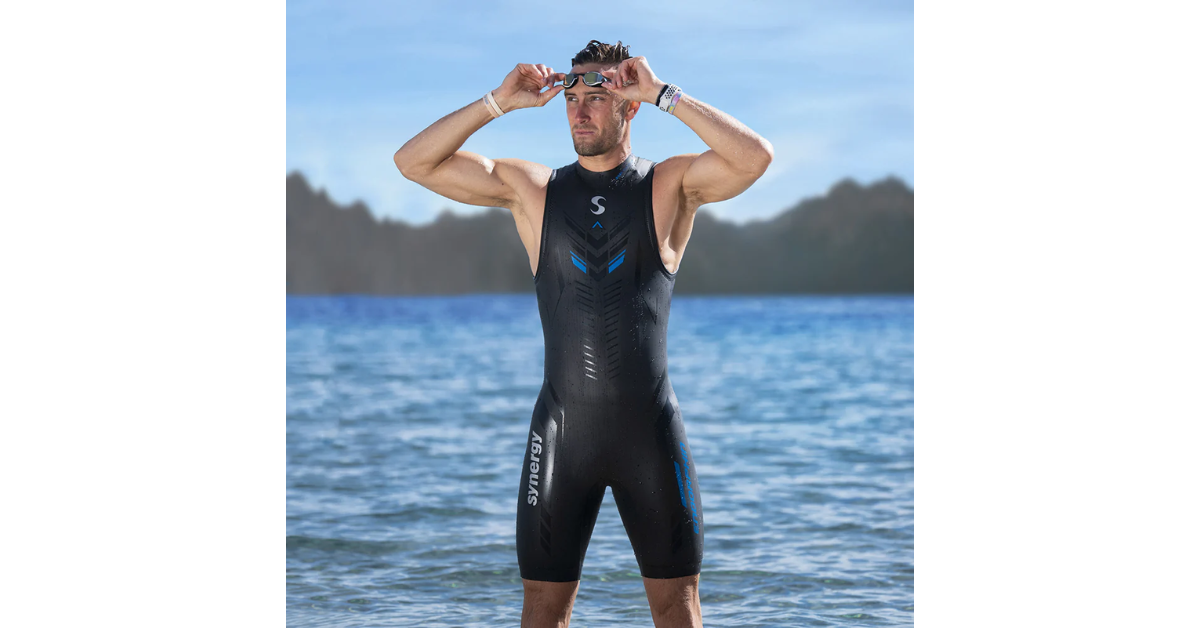Beginner to Pro: How to Choose the Perfect Swimming Wetsuit
When it comes to swimming, the right wetsuit can make a world of difference in both performance and comfort. Whether you’re just starting your swimming journey or you’re an experienced swimmer looking for the best gear, choosing the perfect wetsuit is essential. This guide will show you the most important things to think about when choosing the right jacket for you.
1. Understand the Different Types of Wetsuits
There are different kinds of swimming wetsuit, each made for a different kind of swimming event. Here’s a breakdown of the most common types:
- Full Wetsuits: These are the most common type, offering full-body coverage, including arms, legs, and torso. They provide great warmth, buoyancy, and protection against the elements, making them ideal for open-water swimming, especially in cooler temperatures.
- Sleeveless Wetsuits: As the name suggests, these wetsuits cover the body but leave the arms exposed. They are great for hot water because they let you move your arms freely and comfortably while still protecting your body with a full wetsuit.
- Shorty Wetsuits: These wetsuits feature short sleeves and legs, making them perfect for warmer waters or for those who prefer greater freedom of movement. They are often the go-to choice for triathletes.
2. Consider the Water Temperature
The water temperature is one of the most important things to think about when choosing a jacket. When it comes to protection, the thickness of the wetsuit material is very important. The thicker the material, the better the wetsuit will be at keeping you warm.
- Cold Water (below 15°C): If you’re swimming in chilly water, look for a wetsuit with a thickness of 5mm or more. This will help insulate your body and retain warmth.
- Cool Water (15°C – 20°C): For moderately cold water, a 3mm to 4mm wetsuit should provide adequate protection. These wetsuits offer a good balance between warmth and flexibility.
- Warm Water (above 20°C): When swimming in warm water, a thinner wetsuit (2mm to 3mm) is more suitable. These wetsuits offer the flexibility needed for comfortable movement without overheating.
By choosing the right wetsuit thickness for your environment, you’ll ensure that you remain comfortable and focused on your swim.
3. Fit Is Everything
No matter how advanced the technology or material of a wetsuit is, if it doesn’t fit properly, it won’t perform as it should. A wetsuit should feel snug but not tight. Here’s how to ensure a proper fit:
- Body Fit: Your jacket should hug your body like a second skin and not get in the way of your movements. Ensure that there are no gaps around the neck, wrists, or ankles where water could enter.
- Leg and Arm Length: The arms and legs of the wetsuit should be the correct length for your body. If they’re too long or too short, it could impact your swimming technique and comfort.
- Flexibility: Look for wetsuits that offer flexibility, especially around the shoulders and arms. This is particularly important for swimmers who want freedom of movement without feeling constricted.
4. Material and Design
What the wetsuit is made of is very important for both comfort and function. Most wetsuits are made from neoprene, which is an excellent insulator and provides flexibility. However, not all neoprene is created equal. Look for wetsuits that use high-quality neoprene for the best balance of flexibility, warmth, and durability.
Some wetsuits also feature additional design elements such as:
- Smooth skin Coatings: These coatings help to minimise water resistance, making you faster in the water.
- Seamless Panels: Wetsuits with seamless panels offer more comfort and flexibility, as there are fewer seams to cause chafing or restrict movement.
- Zipper Placement: The zippers should be set so that the wetsuit is easy to put on and take off without affecting its fit.
5. Budget Considerations
Wetsuits can be very expensive, so it’s important to think about your budget. Don’t forget, though, that the cheapest solution isn’t always the best one. A high-quality wetsuit will last longer and provide better performance than a low-cost alternative. When choosing a wetsuit, consider it as an investment in your comfort and swimming experience.
- Budget Options: For beginners, there are affordable wetsuits that still offer good warmth and flexibility. These are great if you’re just getting started and don’t want to commit to a high-end model.
- Premium Options: Experienced swimmers or those participating in triathlons may want to invest in a more expensive wetsuit with advanced features such as hydrodynamic coatings, greater flexibility, and superior insulation.
Conclusion
Whether you’re just beginning your swimming journey or you’re a seasoned professional, selecting the right wetsuit can elevate your performance and enjoyment in the water. You can find the perfect wetsuit that will fit you well for years to come if you know about the different types, think about the temperature of the water, make sure it fits right, look at the material and design, and keep your budget in mind. With the right wetsuit, you’ll be ready to take your swim from beginner to pro!






